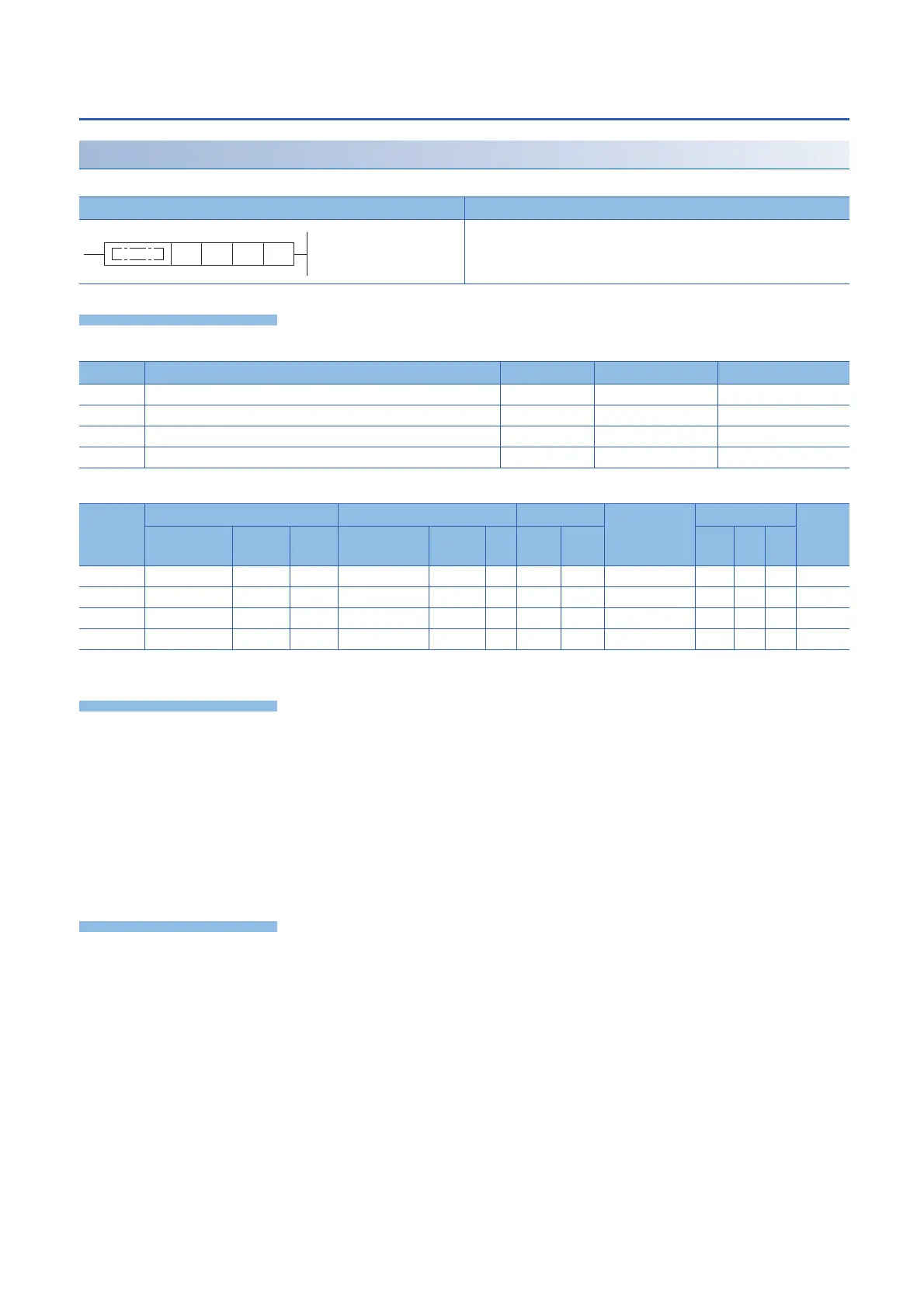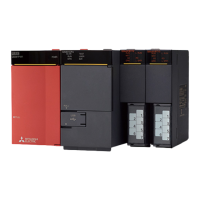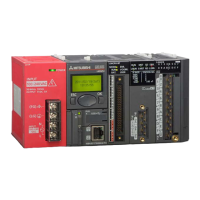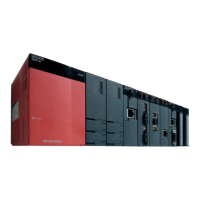652
11 POSITIONING INSTRUCTION
11.1 Positioning Instruction
Zero return(OPR) with 32-bit data DOG search
DDSZR
This instruction executes mechanical zero return.
■Descriptions, ranges, and data types
■Applicable devices
*1 T, ST, C cannot be used.
This instruction executes mechanical zero return. The near-point dog signal and zero-phase signal function follow the device
set with parameters. With the forward limit or reverse limit, zero return with the dog search function can be executed.
• For (s1), specify the zero return speed in user units. (The speed must be 200 Kpps or lower in frequency.)
• For (s2), specify the creep speed in user units. Set the creep speed equal to or slower than the zero return speed set in
(s1). (The speed must be 200 Kpps or lower in frequency.)
• For (d1), specify the axis number for which zero return is performed.
• For (d2), specify the bit device of the zero return complete flag or abnormal end flag.
For details on the function and error code, refer to Built-in positioning manual.
Two devices are occupied from the device specified in (d2). Make sure that these devices are not used in other controls.
For other precautions, refer to Built-in positioning manual.
Ladder diagram Structured text
ENO:=DDSZR(EN,s1,s2,d1,d2);
Operand Description Range Data type Data type (label)
(s1) Zero return speed 1 to 2147483647 32-bit signed binary ANY32
(s2) Creep speed 1 to 2147483647 32-bit signed binary ANY32
(d1) Axis number from which pulses are to be output K1 to 4 32-bit signed binary ANY_ELEMENTARY
(d2) Bit device number of the zero return complete flag or abnormal end flag Bit ANY_BOOL
Operand Bit Word Double word Indirect
specification
Constant Others
X, Y, M, L,
SM, F, B, SB
U\G T, ST,
C, LC
T, ST, C, D,
W, SD, SW, R
U\G Z LC LZ K, H E $
(s1)
(s2)
(d1)
(d2)
*1

